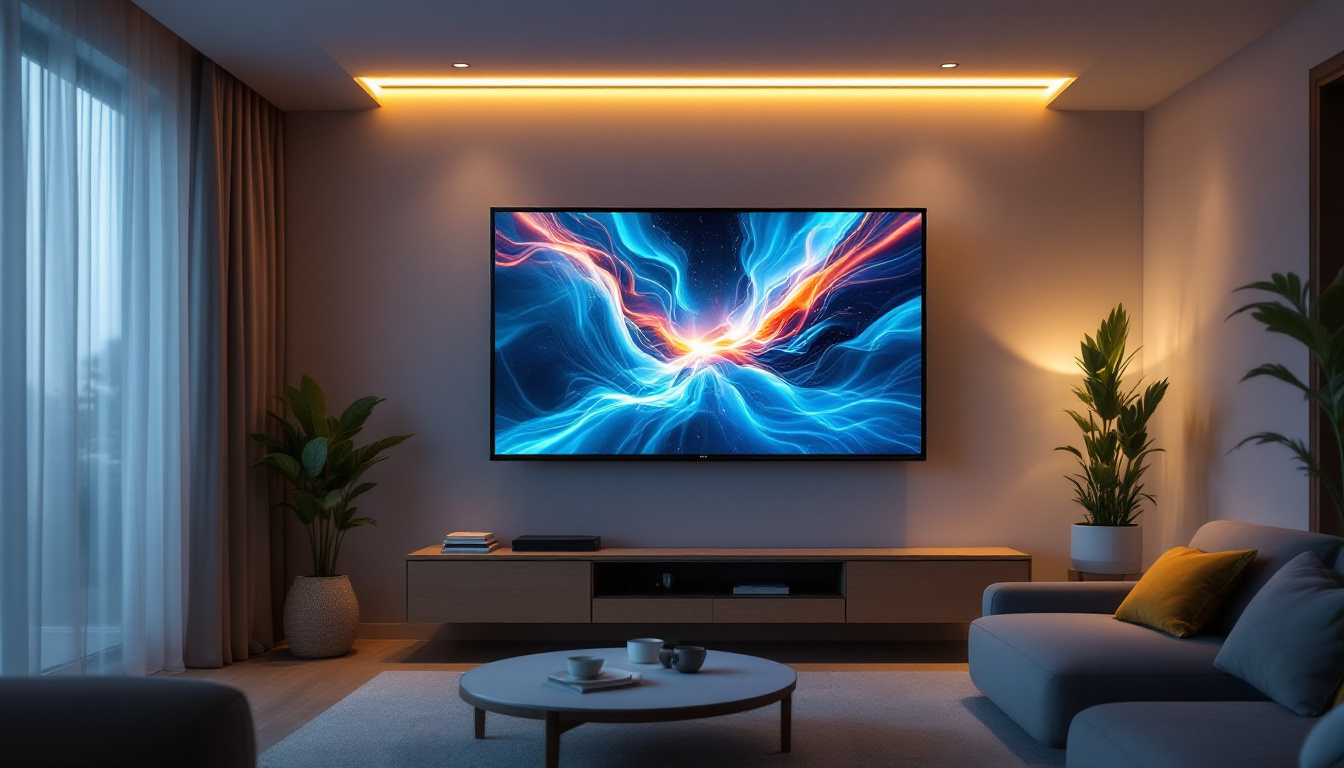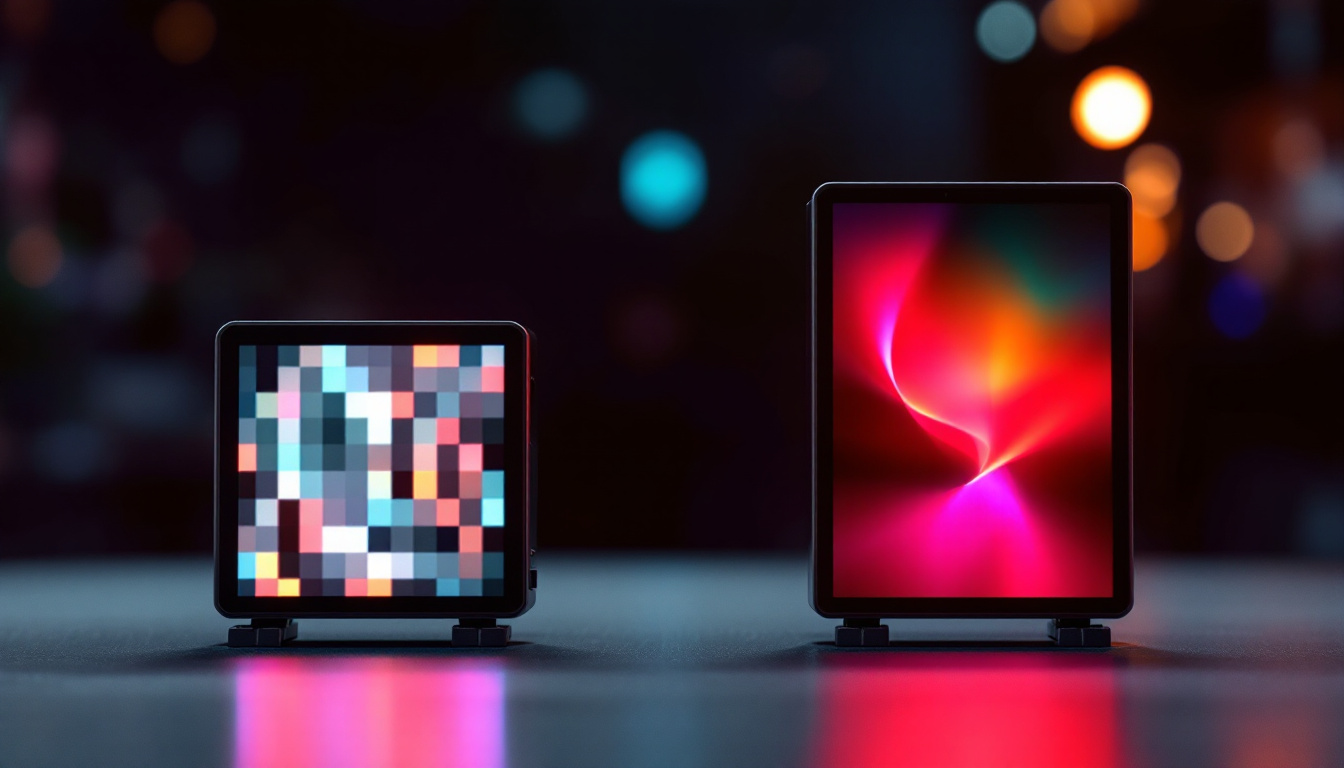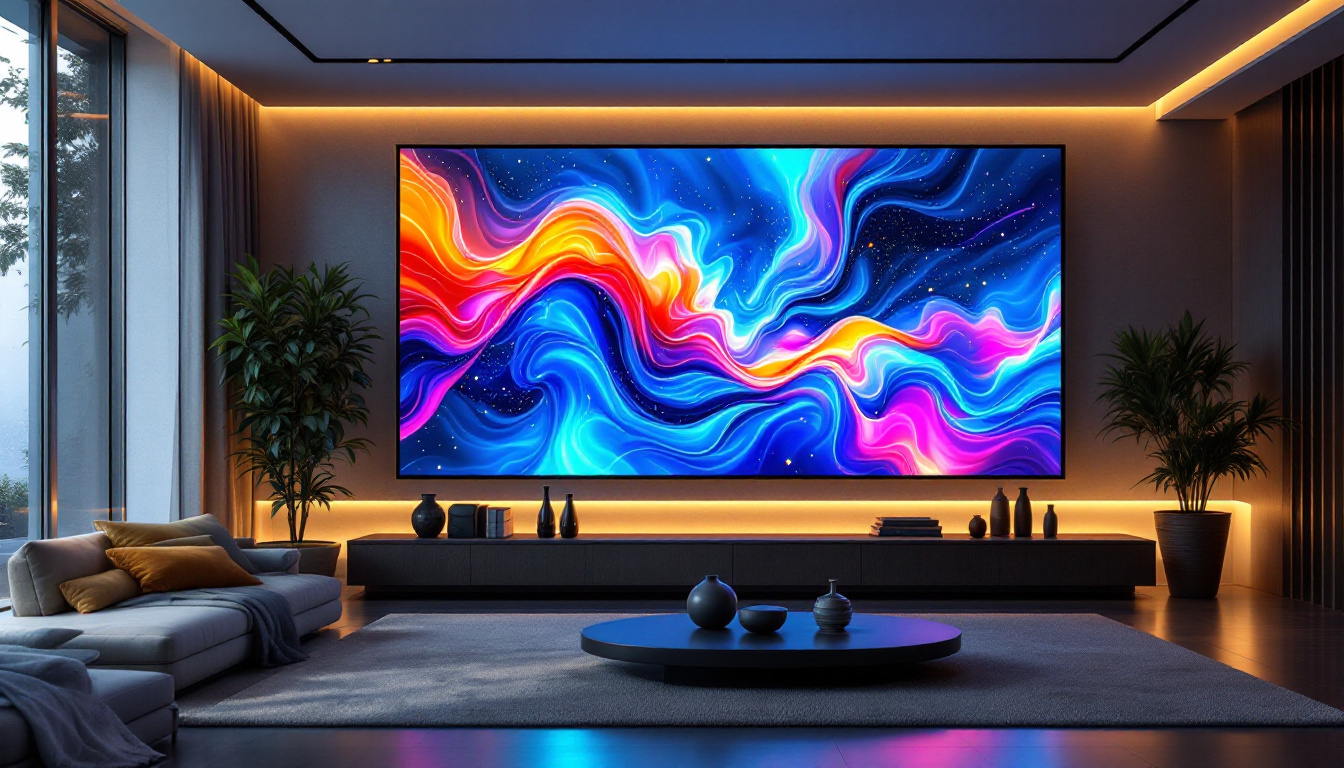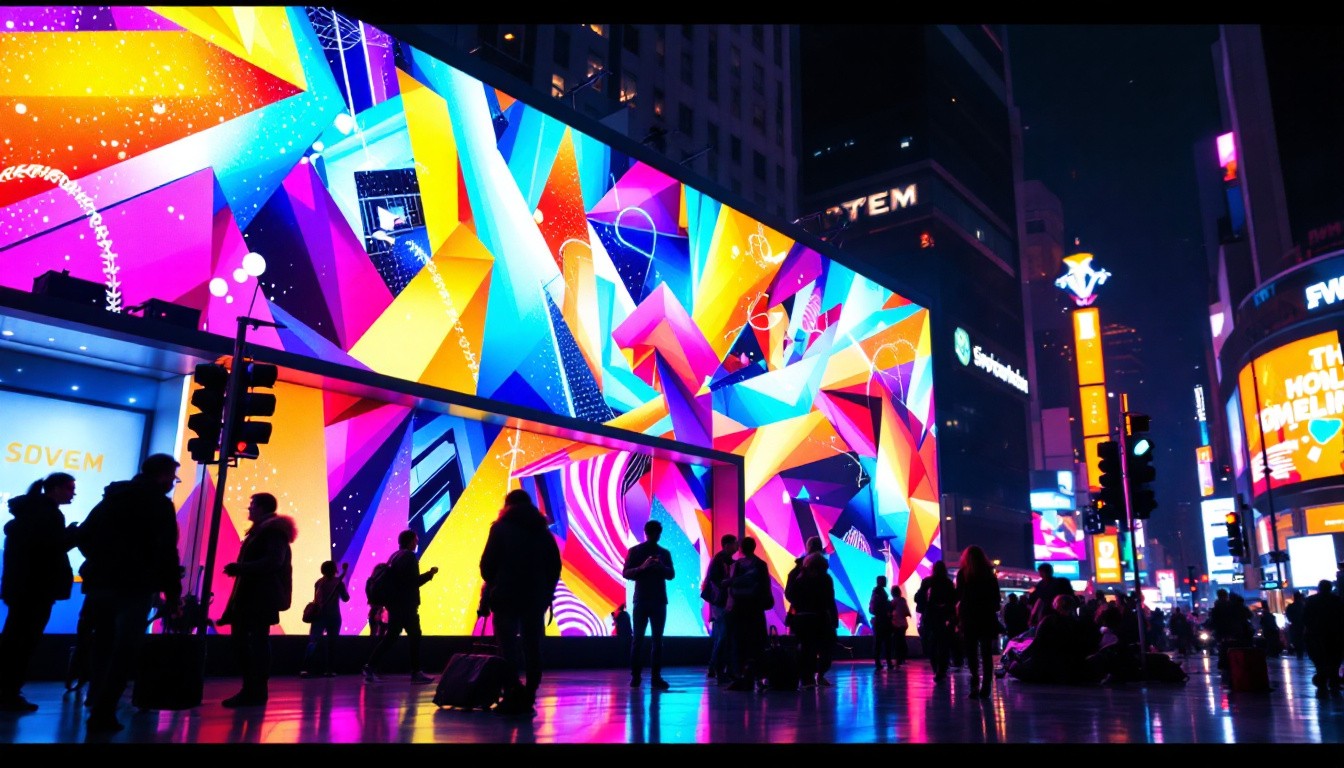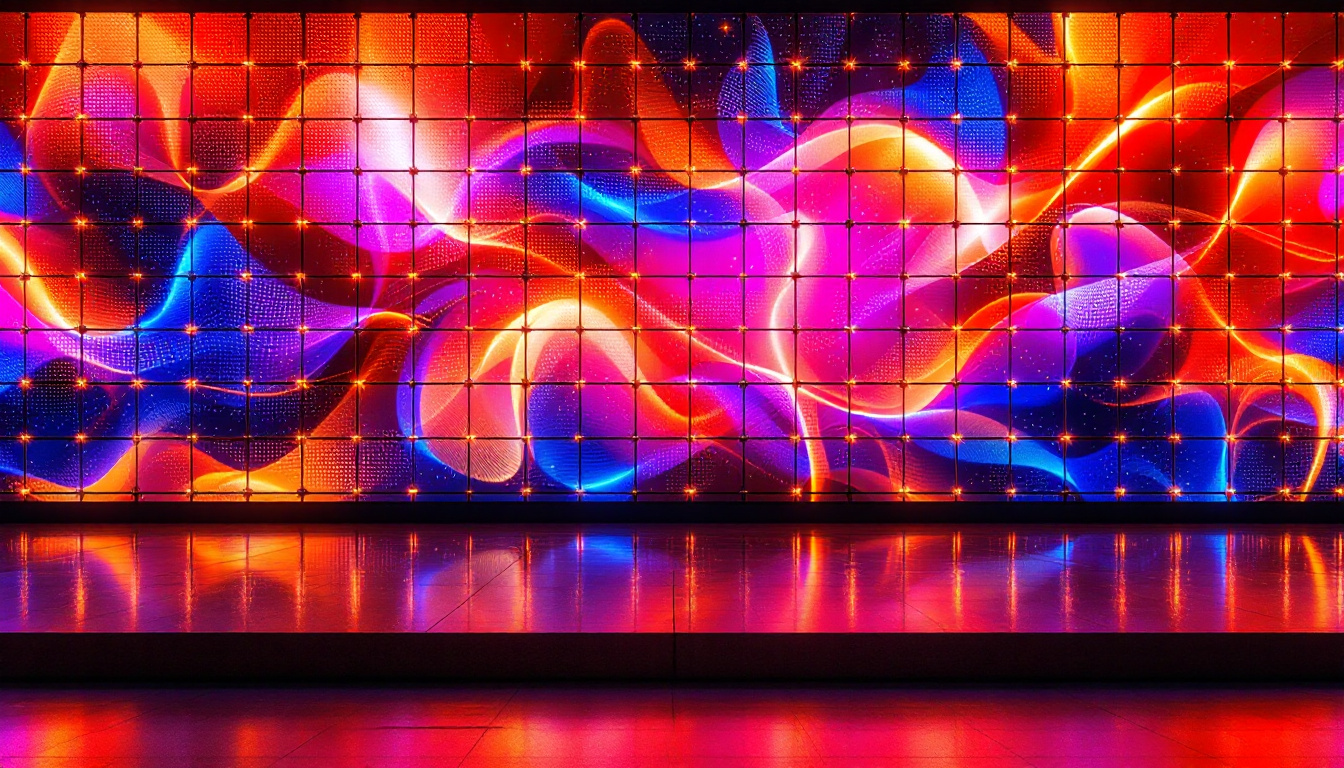In the world of modern display technology, the terms “LCD” and “LED” are frequently used interchangeably, yet they refer to different aspects of display technology. Understanding the distinctions between various types of LCD displays, particularly those that utilize LED backlighting, is crucial for consumers and professionals alike. This article aims to clarify the different LCD types and explain how LED technology enhances display performance.
Understanding LCD Technology
Liquid Crystal Display (LCD) technology has revolutionized the way visual information is presented. LCDs use liquid crystals sandwiched between two layers of glass or plastic, which manipulate light to create images. The technology is widely used in televisions, computer monitors, and mobile devices due to its thin profile and energy efficiency.
The Basics of LCD Operation
At its core, an LCD operates by controlling the passage of light through liquid crystals. When an electric current is applied, the liquid crystals align in a way that either allows light to pass through or blocks it. This modulation of light creates the images that are displayed. However, LCDs do not produce light by themselves; they require a backlight to illuminate the screen. The backlight can be provided by various technologies, including Cold Cathode Fluorescent Lamps (CCFL) or more commonly now, Light Emitting Diodes (LEDs), which offer better brightness and color accuracy while consuming less power.
Types of LCD Displays
LCD technology can be categorized into several types, each with its own characteristics and applications. The primary types include Twisted Nematic (TN), In-Plane Switching (IPS), and Vertical Alignment (VA). Each type offers distinct advantages and disadvantages in terms of color reproduction, viewing angles, and response times. For instance, TN panels are known for their fast response times, making them ideal for gaming, while IPS panels excel in color accuracy and wider viewing angles, which are preferred for professional graphic design and photography work. VA panels, on the other hand, provide superior contrast ratios, making them suitable for watching movies in darker environments.
Advantages of LCD Displays
One of the main advantages of LCD technology is its energy efficiency. Compared to older display technologies like CRT (Cathode Ray Tube), LCDs consume significantly less power, making them more environmentally friendly. Additionally, LCDs are lighter and thinner, allowing for sleek designs in modern devices. The durability of LCD screens also adds to their appeal; they are less prone to burn-in effects compared to OLED displays, which can suffer from image retention over time. Furthermore, advancements in LCD technology have led to the development of high-definition and ultra-high-definition displays, providing users with stunning visuals and enhanced detail for a more immersive viewing experience.
Moreover, the versatility of LCD technology extends beyond just consumer electronics. It is also utilized in various industrial applications, such as in medical devices, automotive displays, and even in digital signage. The ability to create large, high-resolution screens has made LCDs a popular choice for advertising and information dissemination in public spaces. As technology continues to evolve, we can expect further innovations in LCDs, including improvements in refresh rates, color gamut, and overall display performance, ensuring that they remain a vital part of our visual experience.
LED Backlighting: A Game Changer
While LCDs have been around for decades, the introduction of LED backlighting has significantly improved their performance. LED (Light Emitting Diode) backlighting enhances the brightness, contrast, and color accuracy of LCD displays, making them more appealing to consumers. The shift from traditional backlighting methods to LED technology has not only transformed the visual experience but also influenced the design and functionality of modern displays.
How LED Backlighting Works
LED backlighting involves using small light-emitting diodes to illuminate the LCD panel. There are two primary configurations: edge-lit and full-array. In edge-lit displays, LEDs are placed along the edges of the screen, while full-array displays have a grid of LEDs behind the entire panel. Full-array backlighting typically offers better uniformity and contrast. Furthermore, advanced local dimming techniques in full-array systems allow specific areas of the screen to dim or brighten independently, enhancing the overall dynamic range and depth of the images displayed.
Benefits of LED Backlighting
One of the most significant benefits of LED backlighting is improved energy efficiency. LED lights consume less power than traditional fluorescent backlights, contributing to lower energy bills and a reduced carbon footprint. Additionally, LED backlighting allows for higher brightness levels and better contrast ratios, resulting in more vibrant images. This energy efficiency not only benefits consumers but also manufacturers, as it allows for thinner and lighter designs without compromising on performance. As a result, many modern TVs and monitors are sleeker and more aesthetically pleasing, fitting seamlessly into contemporary home and office environments.
Color Accuracy and HDR
LED backlighting also enhances color accuracy, especially in displays that support High Dynamic Range (HDR). HDR technology allows for a wider color gamut and improved brightness levels, creating more lifelike images. This is particularly beneficial for content creators and gamers who demand high-quality visuals. In addition to HDR, advancements in quantum dot technology have further elevated color performance by producing purer colors and deeper saturation. As a result, viewers can enjoy a more immersive experience, whether they’re watching a blockbuster film or playing the latest video game. Moreover, the combination of LED backlighting with these emerging technologies is shaping the future of display innovation, promising even more captivating visual experiences in the years to come.
Different Types of LED Displays
Within the realm of LED displays, there are several types that cater to various needs and preferences. Understanding these types helps consumers make informed decisions when purchasing a new display.
Edge-Lit LED Displays
Edge-lit LED displays are among the most common types found in consumer electronics. They use LEDs positioned along the edges of the screen to provide backlighting. While they are generally thinner and lighter, edge-lit displays can sometimes suffer from uneven brightness, especially in larger screens.
Full-Array LED Displays
full-array LED displays feature a grid of LEDs behind the entire screen, allowing for more uniform backlighting and better contrast. This type of display is particularly effective for HDR content, as it can achieve deeper blacks and brighter whites. Full-array displays are often favored by professionals in graphic design and video editing.
OLED vs. LED LCD
Another important distinction to consider is between LED LCD displays and OLED (Organic Light Emitting Diode) displays. OLED technology does not require a backlight, as each pixel emits its own light. This results in superior contrast ratios and color accuracy. However, OLED displays can be more expensive and may suffer from burn-in issues.
Choosing the Right Display for Your Needs
When selecting a display, it is essential to consider the intended use. Different applications may require different features, such as color accuracy, response time, or viewing angles. Understanding the characteristics of various LCD and LED technologies can help consumers make the best choice.
For Gaming and Entertainment
For gamers and movie enthusiasts, a display with fast response times and high refresh rates is crucial. Full-array LED displays with HDR support are often recommended for their superior contrast and vibrant colors, enhancing the overall viewing experience.
For Professional Use
Professionals in graphic design, photography, and video editing should prioritize color accuracy and uniformity. High-end IPS panels with full-array backlighting are ideal, as they provide wide viewing angles and precise color reproduction.
For General Use
For everyday tasks such as browsing the web or working on documents, a mid-range edge-lit LED display may suffice. These displays offer a good balance of performance and affordability, making them suitable for most consumers.
Future Trends in Display Technology
As technology continues to evolve, so too does the landscape of display technology. Emerging trends such as Mini-LED and MicroLED are set to redefine the viewing experience, offering even greater brightness, contrast, and color accuracy.
Mini-LED Technology
Mini-LED technology utilizes smaller LEDs for backlighting, allowing for more precise control over local dimming zones. This results in improved contrast ratios and enhanced HDR performance. Mini-LED displays are gaining traction in high-end televisions and monitors, providing a compelling alternative to traditional LED displays.
MicroLED Displays
MicroLED technology takes things a step further by using microscopic LEDs to create individual pixels. This allows for perfect black levels and infinite contrast ratios, similar to OLED displays, but without the risk of burn-in. MicroLED displays are still in their infancy but hold great promise for the future of visual technology.
The Role of AI in Display Technology
Artificial Intelligence (AI) is also playing a significant role in enhancing display technology. AI algorithms can optimize image processing, improve color accuracy, and even adjust settings based on the content being viewed. This integration of AI promises to enhance user experience and make displays smarter and more responsive.
Conclusion
In conclusion, understanding the various types of LCD displays and the role of LED backlighting is essential for making informed decisions in today’s technology-driven world. From gaming and entertainment to professional applications, the right display can significantly enhance the viewing experience. As technology continues to advance, staying informed about emerging trends will ensure that consumers and professionals alike can choose the best displays for their needs.
Whether opting for an edge-lit LED display for casual use or a full-array model for professional applications, the advancements in LCD and LED technology promise a future filled with vibrant, high-quality visuals that cater to every preference and requirement.
Discover Cutting-Edge LED Displays with LumenMatrix
Ready to elevate your visual experience with the latest in LED display technology? Look no further than LumenMatrix, a pioneer in crafting innovative LED display modules designed to enhance brand visibility and captivate audiences. Whether you need an Indoor LED Wall Display for your business, an Outdoor LED Wall Display for advertising, or any of our specialized solutions like Vehicle LED Displays, LED Sports Displays, or Custom LED Displays, LumenMatrix has you covered. Embrace the future of visual communication and check out LumenMatrix LED Display Solutions today to see how we can transform your space with vibrant, high-quality visuals.


